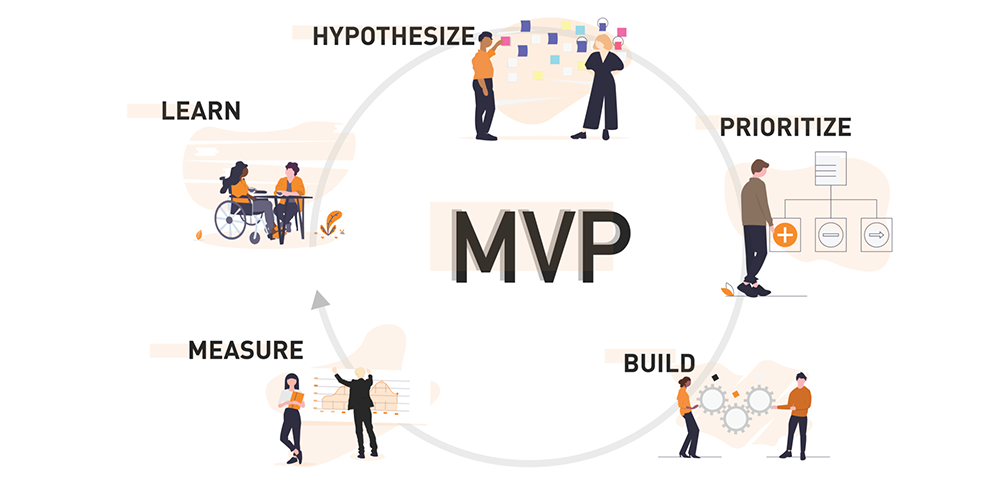Importance of MVP, how to create one and what happens next?
What is an MVP (minimum viable product)?
MVP stands for Minimum Viable Product. It is a development methodology where the aim is to create a product with the bare minimum features necessary to satisfy early customers, and then use their feedback to inform further development.
The MVP approach has become popular in recent years as a way to efficiently develop products that can rapidly evolve based on customer feedback, rather than spending time and resources on features that may never be used.
One of the key benefits of MVP development is that it allows startups to validate their product ideas quickly and cheaply without having to build a fully-featured product from scratch.
If you’re thinking about starting a new business or developing a new product, consider using the MVP approach to get your idea off the ground. Thanks for reading!

Why is MVP (minimum viable product) a good idea?
There are plenty of reasons to love MVPs. For starters, they help simplify and focus your product development efforts by zeroing in on the core functionality that your users need. They also help you get your product to market faster, which is crucial when it comes to keeping up with the competition.
But perhaps the most compelling reason to go with an MVP strategy is that it allows you to test and validate your product idea with real users before going all-in on development. This feedback loop is essential for ensuring that you’re building something that people actually want and will use.
So if you’re wondering whether MVP is right for your next product, the answer is almost certainly yes! And if you’re not sure where to start, there are plenty of resources online to help you out. Happy building!
What is the best way to create a MVP?
There are many different ways to create a MVP, but the best way to do it depends on your specific situation. Here are a few of the most common ways to create a MVP:
1. The simplest way to create a MVP is to just launch a basic version of your product or service and see how it performs. This can be a good option if you don’t have a lot of time or money to invest in your project.
2. Another common way to create a MVP is to prototype your product or service. This can be helpful if you want to test out your idea before you invest too much time or money into it.
3. A third option is to use existing products and services as your MVP. This can be a good way to get started quickly and avoid building something from scratch.
4. Finally, you can also use landing pages or Minimum Viable Websites to create your MVP. This can be a good option if you want to test out your marketing strategy before you launch your product.
No matter which approach you choose, creating a MVP is a great way to improve your chances of success. By testing your idea early and often, you can make sure that it is actually viable before investing too much time or money into it.
What is next after a successful minimum viable product?
Now that you have a successful minimum viable product, it’s time to start thinking about what comes next. How can you take your product to the next level and continue growing your business?
There are a few options to consider:
1. Add new features or functionality to your existing product
2. Create a new product altogether
3. Expand your marketing efforts to reach new audiences
4. Increase your sales and distribution channels
No matter which route you decide to take, always keep your customer’s needs and wants in mind. What will help them solve their problems better? What would make their experience using your product more enjoyable? By continuously improving your offering, you’ll be able to keep your business growing for years to come.
Thanks for reading! I hope this article was helpful. Contact us for more info.

